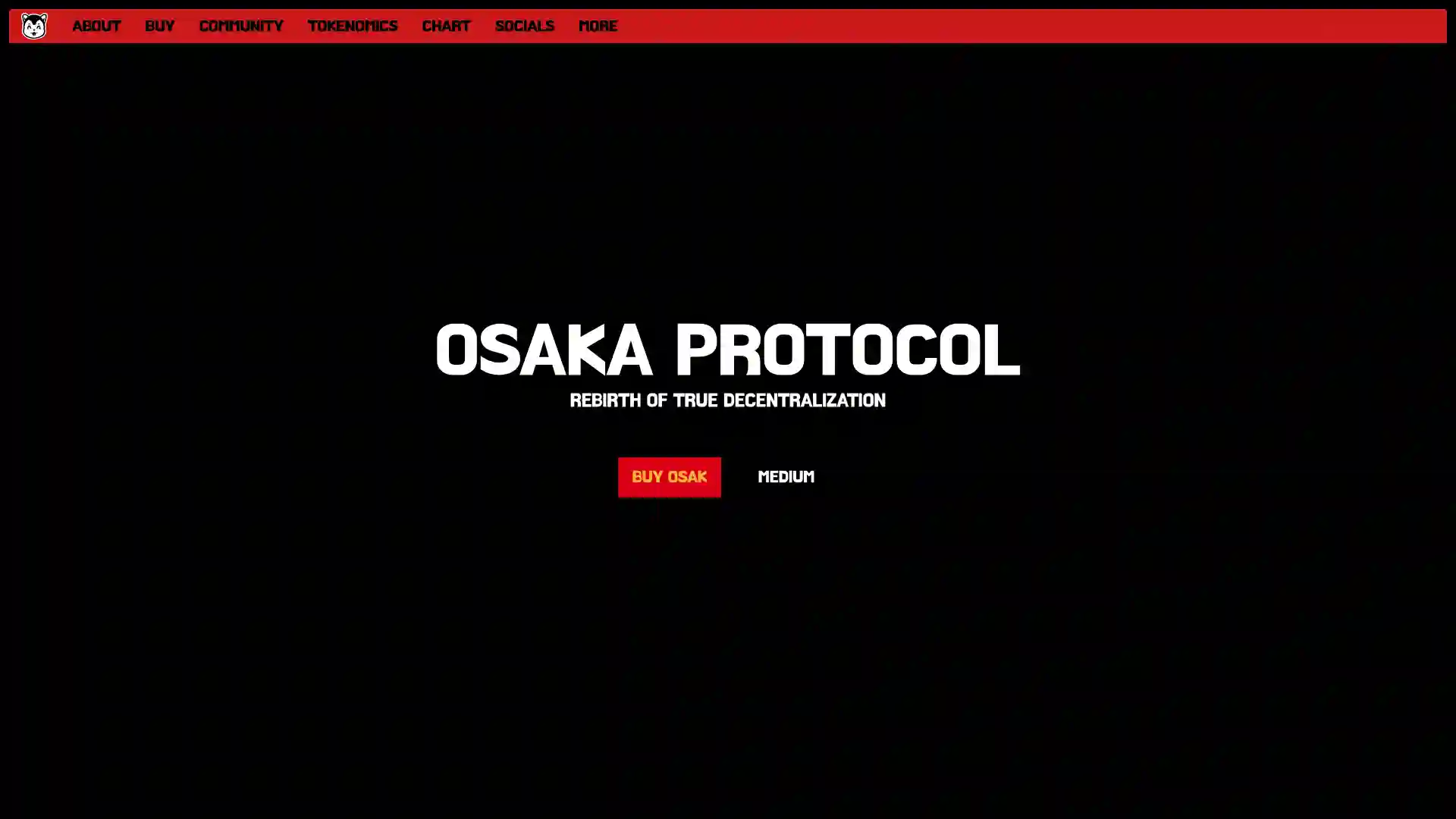Osaka Protocol (OSAK)
Osaka Protocol, introduced on April 23, 2023, is designed to reinforce the ideals of decentralization. The protocol is committed to fairness by ensuring a balanced distribution without developer reserves or preferential access for early participants. This initiative aims to build a cooperative ecosystem grounded in shared ownership, transparency, and trust, reflecting the foundational ideals of decentralized finance (DeFi).
Overview of Osaka Protocol
Osaka Protocol is a decentralized finance project that champions shared responsibility and equality. It operates on the Ethereum network with a fixed ERC-20 contract and employs a deflationary model by burning 50% of its initial supply. The tokens are distributed through airdrops and liquidity incentives, fostering community participation. The protocol prioritizes transparency and collaboration, striving to develop a vibrant, community-driven environment.
Features of Osaka Protocol
Deflationary tokenomics

| Ticker | OSAK |
| Category | BNB Chain Ecosystem |
| Website | https://osaka.win |
| @osakaprotocol | |
| Telegram | Osakaprotocol |
| Contract Addresses | |
|---|---|
| ethereum | 0xa2...5c Copied! Copied! |
| optimistic-ethereum | 0xbf...5e Copied! Copied! |
| binance-smart-chain | 0x11...c7 Copied! Copied! |
| arbitrum-one | 0xbf...5e Copied! Copied! |
| base | 0xbf...5e Copied! Copied! |
| polygon-pos | 0x11...c7 Copied! Copied! |
| avalanche | 0x96...d7 Copied! Copied! |
Osaka Protocol adopts a deflationary model, inspired by Shiba Inu, by burning 100% of its intellectual property and 50% of its token supply at launch. This mechanism reduces the token supply over time, encouraging scarcity and enhancing token value.
Liquidity farm incentives
The protocol incentivizes liquidity provision by offering rewards to users participating on platforms such as Uniswap. This approach bolsters liquidity, boosts trading activity, and strengthens the ecosystem.
Airdrop distribution
Tokens are distributed through airdrops to early supporters and active participants, ensuring equitable distribution and encouraging broader adoption.
Transparent token allocation
Osaka Protocol maintains transparency in token distribution, with clear allocations for liquidity, airdrops, and farming incentives. This transparency fosters trust and ensures fair resource management.
Consensus mechanism
Community voting
Osaka Protocol employs a governance model where token holders can propose and vote on decisions. Voting power is proportionate to each holder's stake, ensuring that governance reflects collective input and maintains a decentralized structure.
Community participation rewards
Active participants in governance activities, such as voting or submitting proposals, receive tokens or other incentives as rewards. This strategy promotes an active and engaged community.
Stakeholder feedback integration
The protocol integrates stakeholder feedback collected through surveys, discussions, and voting, ensuring that governance remains responsive to community needs and priorities.
Governance token staking
Users can stake tokens to participate in governance, with voting power proportional to the staked amount. This model encourages long-term commitment and active involvement in decision-making.
Tokenomics of Osaka Protocol
Osaka Protocol Token ($OSAK)
The $OSAK token follows the supply model of the original Shiba Inu and is based on a fixed, immutable ERC-20 contract. It is Omnichain-enabled, utilizing LayerZero's Omnichain Fungible Token (OFT) standards. An OFT Bridge Adapter on Ethereum facilitates secure cross-chain transfers by holding $OSAK tokens for bridging across multiple blockchain networks.
Token supply
The token supply model of Osaka Protocol mirrors that of the original Shiba Inu, with a fixed and immutable structure to ensure security and integrity.
